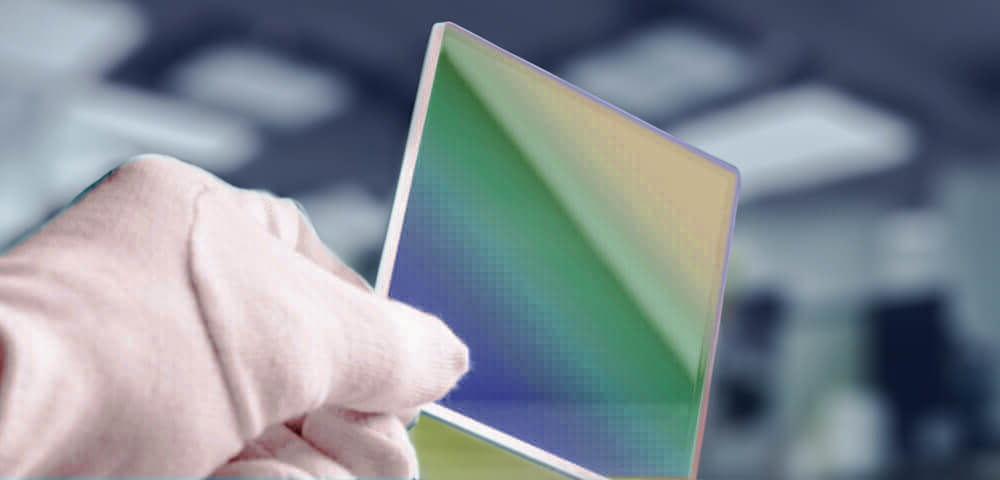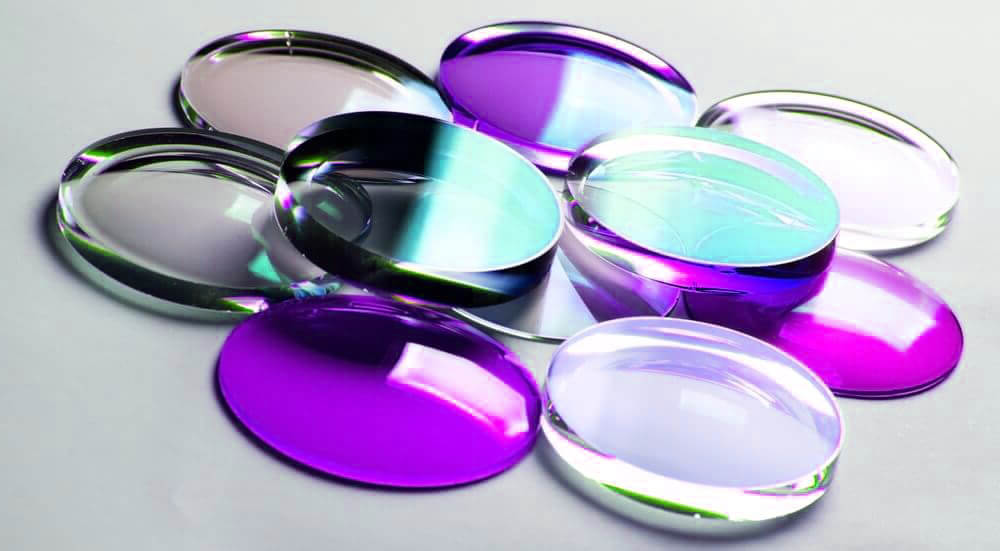Optical coatings play a pivotal role in the world of optics, providing essential functions to optical systems. From increasing reflectivity to enhancing transmission and reducing unwanted reflections, optical coatings are instrumental in driving innovation in optical technologies.
We review the cutting-edge advancements in optical coatings, delving into the different types, their applications, and how they optimise the performance of various optical systems and applications.
Key Takeaways:
- Optical coatings enhance optical systems by increasing reflectivity, enhancing transmission, and reducing unwanted reflections.
- Types of optical coatings include dielectric, metallic, and hybrid coatings, each serving specific optical requirements.
- Latest developments in optical coatings include nanostructured coatings for precise control and magnetron sputtering for uniform deposition.
- Advancements in coating design and simulation enable rapid prototyping and optimisation for specific applications.
- Future trends in optical coatings involve advancements in nanotechnology, eco-friendly coatings, coatings for emerging technologies like AR and VR, and integration of smart coatings with adaptive capabilities.
Types of Optical Coatings
There are various types of optical coatings which can be applied to a range of optical components and glasses from UV to IR and anti-reflection.
Dielectric Coatings: These coatings are specifically designed to control the interaction of light with optical components. By enhancing transmission, minimising reflections, and improving overall system efficiency, dielectric coatings play a key role in optimising optical systems. For instance, high-performance optical lenses benefit significantly from dielectric coatings, reducing surface reflections and leading to improved image quality.
Metallic Coatings: Known for their high reflectivity properties, metallic coatings, such as aluminium and silver, find extensive use in mirrors and other optical components. These coatings are vital in telescope mirrors, allowing astronomers to capture distant celestial phenomena with exceptional clarity and precision.
Hybrid Coatings: Combining the strengths of both dielectric and metallic coatings, hybrid coatings offer unique solutions for specific optical requirements. From beam splitters to specialised optical filters, hybrid coatings fulfill diverse optical needs.
Latest Developments in Optical Coatings
The field of optical coatings is ever-evolving, with remarkable advancements that continue to revolutionise the world of optics. Researchers and scientists are at the forefront of this progress, exploring new materials and techniques to improve coating performance and meet the ever-increasing demands of optical systems.
Nanostructured Coatings: Precision at the Nanoscale
One of the most exciting recent developments in optical coatings is the emergence of nanostructured coatings. Engineered at the nanoscale, these coatings allow precise control over their optical properties, enabling groundbreaking applications. By manipulating the structure and composition of the coating at the nanometer level, researchers can achieve enhanced light absorption, reduced reflections, and improved spectral selectivity.
Nanostructured coatings find extensive use in optical filters, solar cells, and anti-reflective coatings. For instance, in solar cell technology, nanostructured coatings can optimise light trapping, enabling more efficient energy conversion.
Researchers at the Massachusetts Institute of Technology (MIT) have made significant strides in this area, utilising nanostructured coatings to enhance the efficiency of perovskite solar cells by capturing a broader spectrum of sunlight.

Magnetron Sputtering: Precision Deposition Technique
Advancements in thin-film deposition techniques have also been a game-changer in the world of optical coatings. Magnetron sputtering, in particular, has gained significant traction due to its precise and uniform deposition capabilities. In this technique, a high-power magnetron generates a plasma to eject atoms from the target material, which then deposit uniformly onto the substrate.
Magnetron sputtering allows researchers and manufacturers to achieve greater control over coating thickness and composition. The result is coatings with enhanced optical properties, improved durability, and reduced defects.
Advances in Coating Design and Simulation
With the growing complexity of optical systems, the demand for optimised coatings has never been greater. Researchers are leveraging advanced simulations and modeling techniques to design coatings tailored to specific applications. Computational methods based on principles of quantum mechanics and electrodynamics enable accurate predictions of coating behaviour and performance.
These advanced design tools significantly accelerate the development of new coatings, allowing for rapid prototyping and optimisation. Researchers at the National Institute of Standards and Technology (NIST) have been using these simulations to design high-performance optical coatings for hyperspectral imaging systems used in environmental monitoring.

How are Advancements in Optical Coatings Benefiting Applications?
The latest advancements in optical coatings have opened up exciting new applications, pushing the boundaries of what optical systems can achieve. From cutting-edge technologies to real-world industries, optical coatings are playing a pivotal role in revolutionising various applications.
Lidar Technology
One compelling real-world application of optical coatings can be seen in the field of lidar technology. Lidar, short for Light Detection and Ranging, utilises laser light for range finding and object detection. Optical coatings play a crucial role in ensuring optimal light transmission and accurate measurements in lidar systems.
In autonomous vehicles, lidar sensors heavily rely on optical coatings to maximise the detection of surrounding objects and obstacles. These coatings enhance the efficiency of lidar sensors by reducing reflection losses and minimising signal noise. As a result, lidar systems can provide more accurate and reliable data for safe navigation and object recognition.
Researchers and manufacturers are actively developing specialised coatings tailored to the unique requirements of lidar applications. This ongoing research in coating design is instrumental in advancing lidar technology and its widespread adoption in various industries, including automotive, agriculture, and environmental monitoring.
Innovations in Display Technology
Optical coatings are also at the forefront of innovations in display technology, particularly in augmented reality (AR) and virtual reality (VR) devices. These immersive technologies demand high-quality optical coatings to deliver realistic and vibrant visual experiences to users.
In AR and VR headsets, advanced anti-reflective coatings ensure minimal glare and maximum light transmission. This results in crystal-clear images and a more immersive user experience. By reducing reflections and increasing light throughput, these coatings elevate the performance of AR and VR devices, enhancing their usability in diverse applications, from gaming and entertainment to training and simulations.
Cutting-Edge Cameras and Imaging Systems
The advancements in optical coatings are revolutionising cameras and imaging systems used in various industries, such as medical, surveillance, and remote sensing. Optical coatings are integral to these systems, enhancing image quality, sensitivity, and light collection.
In medical imaging, advanced coatings are employed to minimise reflections and maximise light transmission in optical components, resulting in improved image clarity and accuracy. In surveillance and remote sensing applications, anti-reflective coatings on lenses and mirrors enable more precise and reliable data collection, even in challenging environmental conditions.
Future Trends in Optical Coatings
As technology continues to advance, the future of optical coatings holds exciting potential for even more innovative applications and developments. Here, we explore some of the emerging trends and areas of focus that are shaping the future of optical coatings.
1. Advancements in Nanotechnology
The use of nanotechnology in optical coatings is an area of increasing interest and research. Nanotechnology allows the precise engineering of coatings at the nanoscale, enabling control over optical properties with unparalleled precision.
This level of control is opening up new possibilities for customised coatings that can be tailored for specific applications, leading to improved optical performance and enhanced functionalities.
Researchers and scientists are actively exploring novel nanomaterials and nanostructured coatings that can deliver enhanced light absorption, reduced reflection, and improved spectral selectivity.
By harnessing the potential of nanotechnology, optical coatings can be designed to meet the evolving needs of various industries, from telecommunications and data centers to healthcare and environmental monitoring.
2. Sustainable and Eco-Friendly Coatings
As the world continues to focus on sustainability and environmental impact, the optical coatings industry is also making strides towards developing eco-friendly and sustainable solutions. Researchers are exploring environmentally friendly materials and manufacturing processes that minimise waste and reduce the use of harmful substances.
Green coatings that adhere to strict environmental standards are gaining traction in various industries. These coatings not only provide optical functionalities but also contribute to reducing the ecological footprint of optical systems. The demand for sustainable optical coatings is expected to rise, especially in industries with stringent environmental regulations, such as renewable energy, automotive, and aerospace.
3. Coatings for Emerging Technologies
As technology advances, new applications and devices emerge, presenting unique challenges and opportunities for optical coatings. One of the rapidly emerging technologies where optical coatings are playing a pivotal role is augmented reality (AR) and virtual reality (VR).
AR and VR devices require advanced coatings to deliver immersive and realistic visual experiences to users. Coatings that minimise reflections and enhance light transmission are essential for AR and VR headsets to provide clear and vibrant images.
As AR and VR technologies continue to gain popularity in gaming, entertainment, training, and other applications, the demand for high-quality optical coatings is expected to rise.
4. Integration of Smart Coatings
The integration of smart coatings with optical functionalities is another exciting area of research and development. Smart coatings can respond to external stimuli, such as temperature, humidity, or light, and adapt their optical properties accordingly.
This adaptive capability opens up new possibilities for self-cleaning coatings, dynamic optical filters, and responsive coatings for energy-efficient devices.
Applications of smart coatings can extend to various industries, such as architecture, automotive, and electronics. For example, adaptive coatings that respond to changes in temperature or sunlight can enhance energy efficiency in buildings and improve the performance of solar panels.
Finding Quality Optical Coatings
Selecting the right optical coatings drives efficiency and precision across various industries. From dielectric coatings optimising light transmission to metallic coatings revolutionising telescope mirrors, optical coatings are instrumental in shaping the future of optics. As the field evolves, the latest developments and future trends in optical coatings will continue to propel optical technologies forward.
Our expertise in custom optics and dedication to delivering precision solutions ensure your optical systems perform at their best. Embrace the exciting world of optical coatings and embrace a future of endless possibilities.




